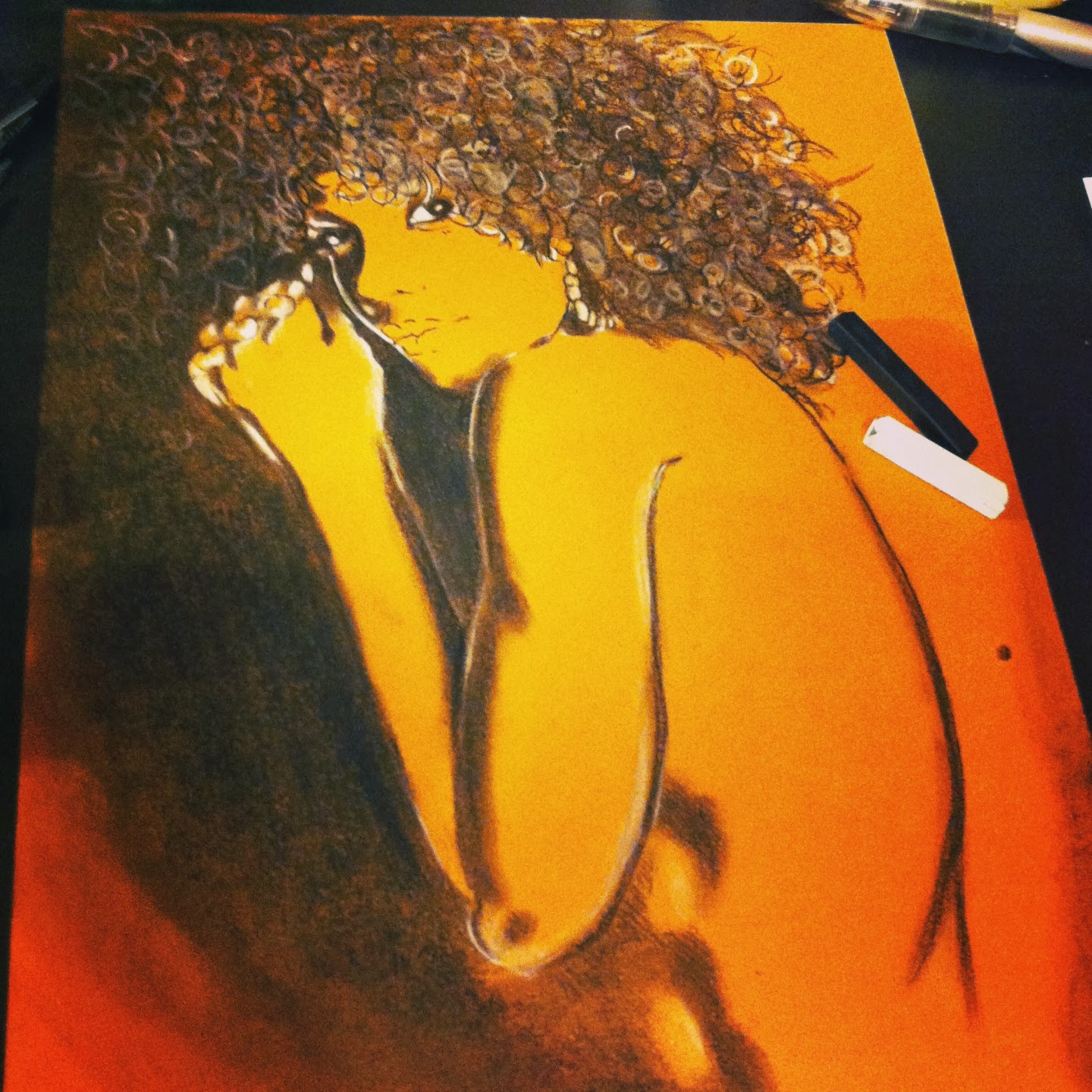In nature, we find patterns, designs and structures from the most
minuscule particles, to expressions of life discernible by human eyes,
to the greater cosmos. These inevitably follow geometrical archetypes,
which reveal to us the nature of each form and its vibrational
resonances. They are also symbolic of the underlying metaphysical
principle of the inseparable relationship of the part to the whole. It
is this principle of oneness underlying all geometry that permeates the
architecture of all form in its myriad diversity. This principle of
interconnectedness, inseparability and union provides us with a
continuous reminder of our relationship to the whole, a blueprint for
the mind to the sacred foundation of all things created.
Printing on unconventional surfaces: plexiglass four layer screen print
Wednesday, March 26, 2014
Tuesday, February 18, 2014
Back to the drawing board....
After taking a semester off from art, I got right back into the swing of things in December. I'm feeling excited to create again, so many ideas to translate into some form of medium. Stay tuned!!
Thursday, November 14, 2013
Four Seasons Project : Concordia Greenhouse
I'm currently doing an internship in an urban greenhouse on the 13th floor of Concordia's Hall building. This project aims to explore the possibilities of urban agriculture in a
greenhouse year-round. This includes overcoming the challenges of
limited space and sunlight in the winter, while taking advantage of the
year-round access to sun and warmth that the greenhouse provides.
Currently, the project is both a source of organic, local food sold at
places such as le Frigo Vert, Burritoville, and Café X, and an
educational resource and demonstration site for different urban
agricultural techniques (including microgreen production and container
gardening). Our four seasons growing is dual tracked, with sprouts and
greens growing simultaneously.
It's been a while....
I fell off the social media train shortly after then end of the spring semester. My summer was spent getting my hands dirty working as a landscaper, planting a garden, biking and hiking my ass off in Edmonton, Alberta. Well it's time to get back on the blog train as I'm starting realise what a valuable tool it is to reflect on thoughts, ideas and activities in my life. I took a whole lot of photos this summer, so I propose a little recap.
Friday, April 12, 2013
Ukio-e and it's Reflections On the Contemporary Skin Canvas
Ukiyo-e is a genre of Japanese woodblock prints (or woodcuts) and paintings produced between the 17th and the 20th centuries, featuring motifs of landscapes, tales from history, the theatre, and pleasure quarters. It is the main artistic genre of woodblock printing in Japan.
Usually the word ukiyo is literally translated as "floating world" in English, referring to a conception of an evanescent world, impermanent, fleeting beauty and a realm of entertainments (kabuki, courtesans, geisha) divorced from the responsibilities of the mundane, everyday world; "pictures of the floating world", i.e. ukiyo-e, are considered a genre unto themselves.
The contemporary novelist Asai Ryōi, in his Ukiyo monogatari provides some insight into the concept of the floating world:
... Living only for the moment, turning our full attention to the pleasures of the moon, the snow, the cherry blossoms and the maple leaves; singing songs, drinking wine, diverting ourselves in just floating, floating; ... refusing to be disheartened, like a gourd floating along with the river current: this is what we call the floating world...[1]The art form rose to great popularity in the metropolitan culture of Edo (Tokyo) during the second half of the 17th century, originating with the single-color works of Hishikawa Moronobu in the 1670s.
Irezumi is a Japanese word that refers to the insertion of ink under the skin to leave a permanent, usually decorative mark; a form of tattooing.
SHIGE (Shigenori Iwasaki)
March 1970 Born in Hiroshima
After being a mechanic of Harley‐Davidson in Yokohama, taught himself how to tattoo since 1995 and pursues original Japanese Style with traditional Japanese style underneath.
 | ||
| Shige - Yello Blaze Tattoo |
Saturday, March 30, 2013
Poetics of Cloth continued...
Friday, March 29, 2013
Artistic Family Tree : Ana Mendieta
Born in Havana, Cuba, 1948, Ana Mendieta was exiled from her native country in 1961, just before the outbreak of the Cuban Revolution. Much of Mendieta's work expresses the pain and rupture of cultural displacement, and resonates with visceral metaphors of death, rebirth, and spiritual transformation. A seminal figure in feminist art practice of the 1970s, Mendieta devised an emblematic, at times mythical female iconography.
In 1972 Mendieta began making ritualistic performances and haunting earth works, in which she immersed or inscribed her own body within nature. Blood, fire, water, and other natural elements are essential to her highly personal, often mystical vocabulary. Burial and regeneration are recurrent themes. Mendieta's ephemeral "earth-body sculptures" and provocative performances were documented through film, video and photography. Whether painting her body with blood, or burning, carving and inscribing female symbols into the landscape, as in her Silueta series, Mendieta's work is infused with enormous power and poetry.
Mendieta writes: "I have been carrying on a dialogue between the landscape and the female body (based on my own silhouette)... I am overwhelmed by the feeling of having been cast from the womb (nature). Through my earth/body sculptures I become one with the earth... I become an extension of nature and nature becomes an extension of my body..."
Over a fourteen-year period Mendieta made more than seventy films and videotapes that document her powerful body-based performances and landscape sculptures.
Ana Mendieta died in 1985 from an apparent fall out of her 34th floor apartment in New York City.
http://www.frieze.com/issue/review/ana_mendieta/
Subscribe to:
Comments (Atom)






























